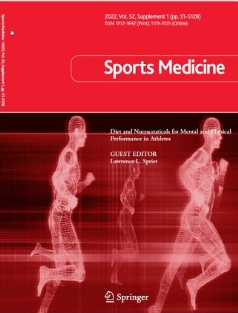Impellizzeri FM1, Marcora SM2
1, Human Performance Laboratory, MAPEI Sport Research Center, Castellanza (VA), Italy;2, School of Sport, Health and Exercise Sciences, University of Wales, Bangor, UK

Mountain biking is a popular outdoor recreational activity and an Olympic sport. Cross-country circuit races have a winning time of approximately equal 120 minutes and are performed at an average heart rate close to 90% of the maximum, corresponding to 84% of maximum oxygen uptake (VO2max). More than 80% of race time is spent above the lactate threshold. This very high exercise intensity is related to the fast starting phase of the race; the several climbs, forcing off-road cyclists to expend most of their effort going against gravity; greater rolling resistance; and the isometric contractions of arm and leg muscles necessary for bike handling and stabilization. Because of the high power output (up to 500W) required during steep climbing and at the start of the race, anaerobic energy metabolism is also likely to be a factor of off-road cycling and deserves further investigation. Mountain bikers’ physiological characteristics indicate that aerobic power (VO2max >70 mL/kg/min) and the ability to sustain high work rates for prolonged periods of time are prerequisites for competing at a high level in off-road cycling events. The anthropometric characteristics of mountain bikers are similar to climbers and all-terrain road cyclists. Various parameters of aerobic fitness are correlated to cross-country performance, suggesting that these tests are valid for the physiological assessment of competitive mountain bikers, especially when normalized to body mass. Factors other than aerobic power and capacity might influence off-road cycling performance and require further investigation. These include off-road cycling economy, anaerobic power and capacity, technical ability and pre-exercise nutritional strategies.
Sports Med. 2007;37(1):59-71.
PMID: 17190536 DOI: 10.2165/00007256-200737010-00005